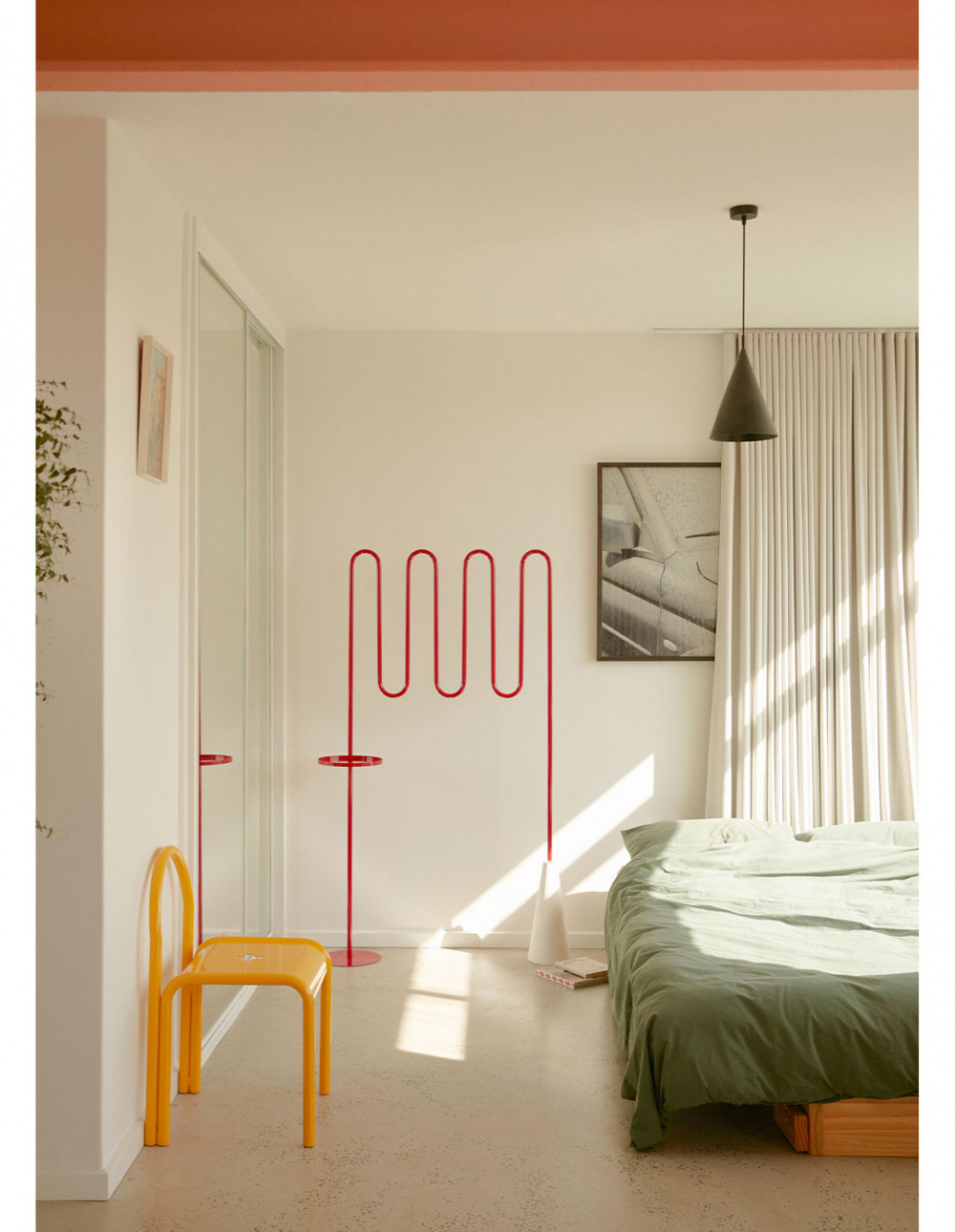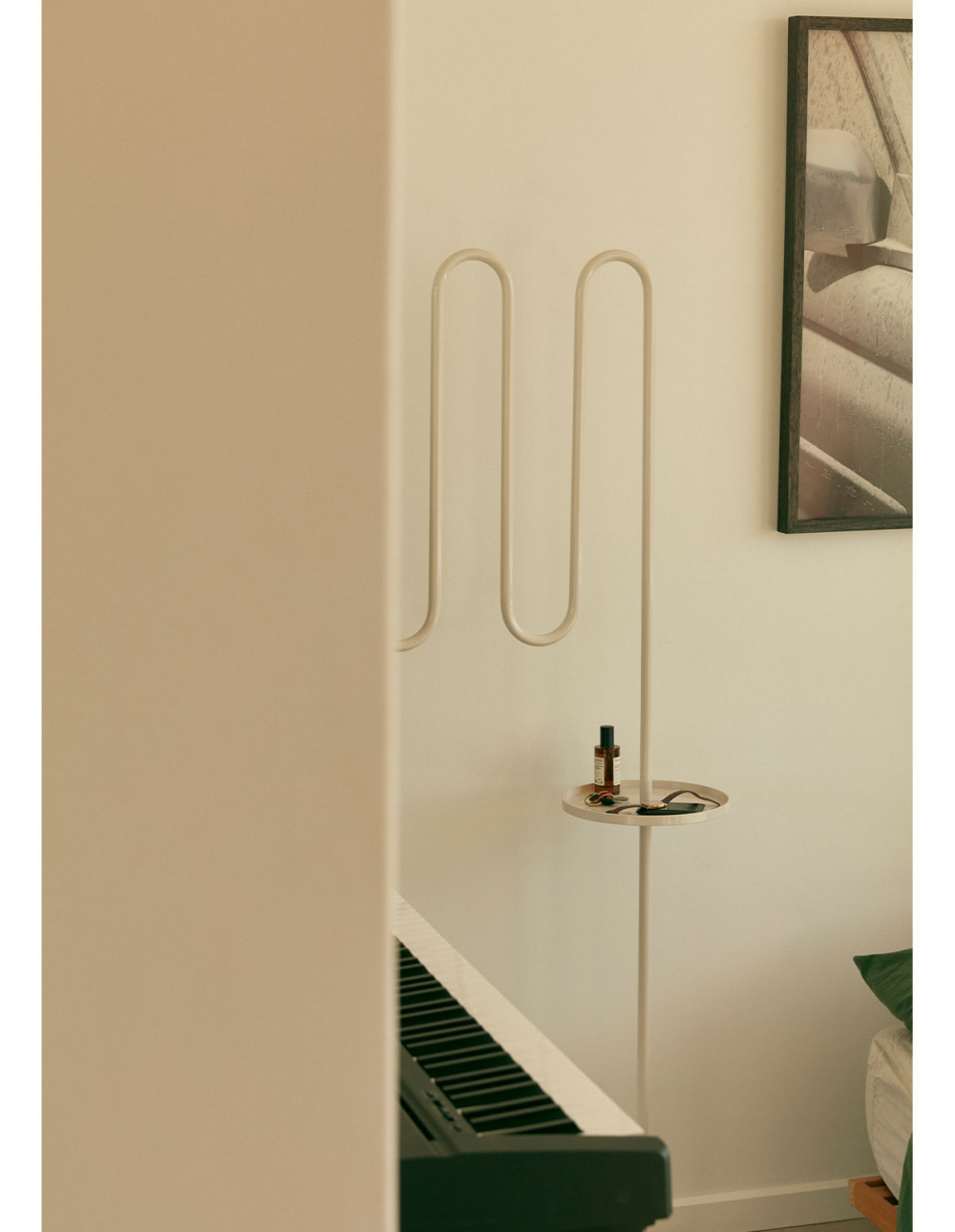The Graduate Designer Pushing The Limits Of Traditional Furniture Design
Posted by admin on
The Graduate Designer Pushing The Limits Of Traditional Furniture Design
Studio Visit
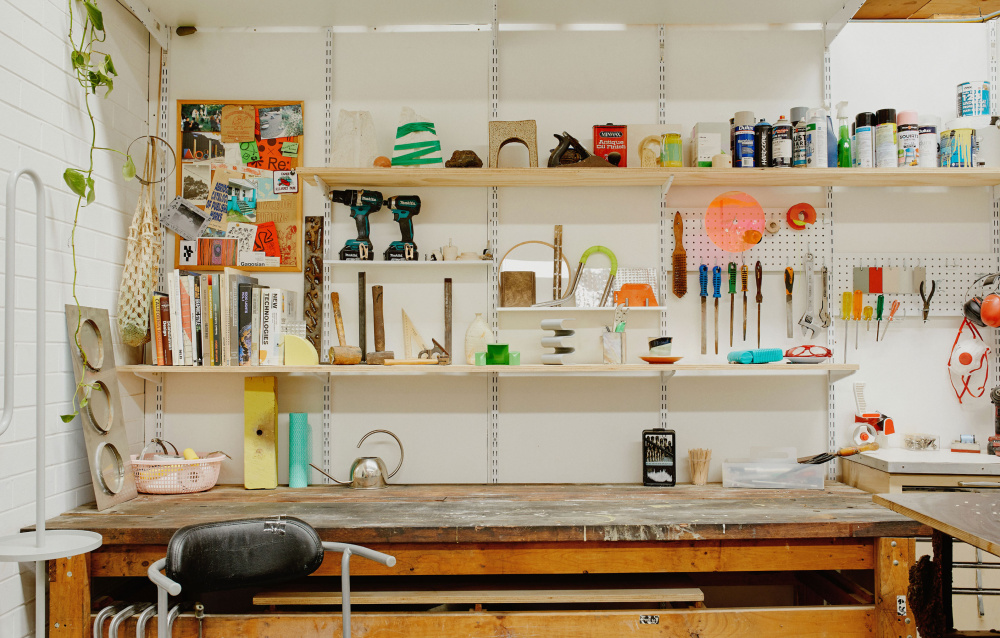
A wall of tools and implements in Brigitte’s Coburg North workshop. Photo – Amelia Stanwix for The Design Files.
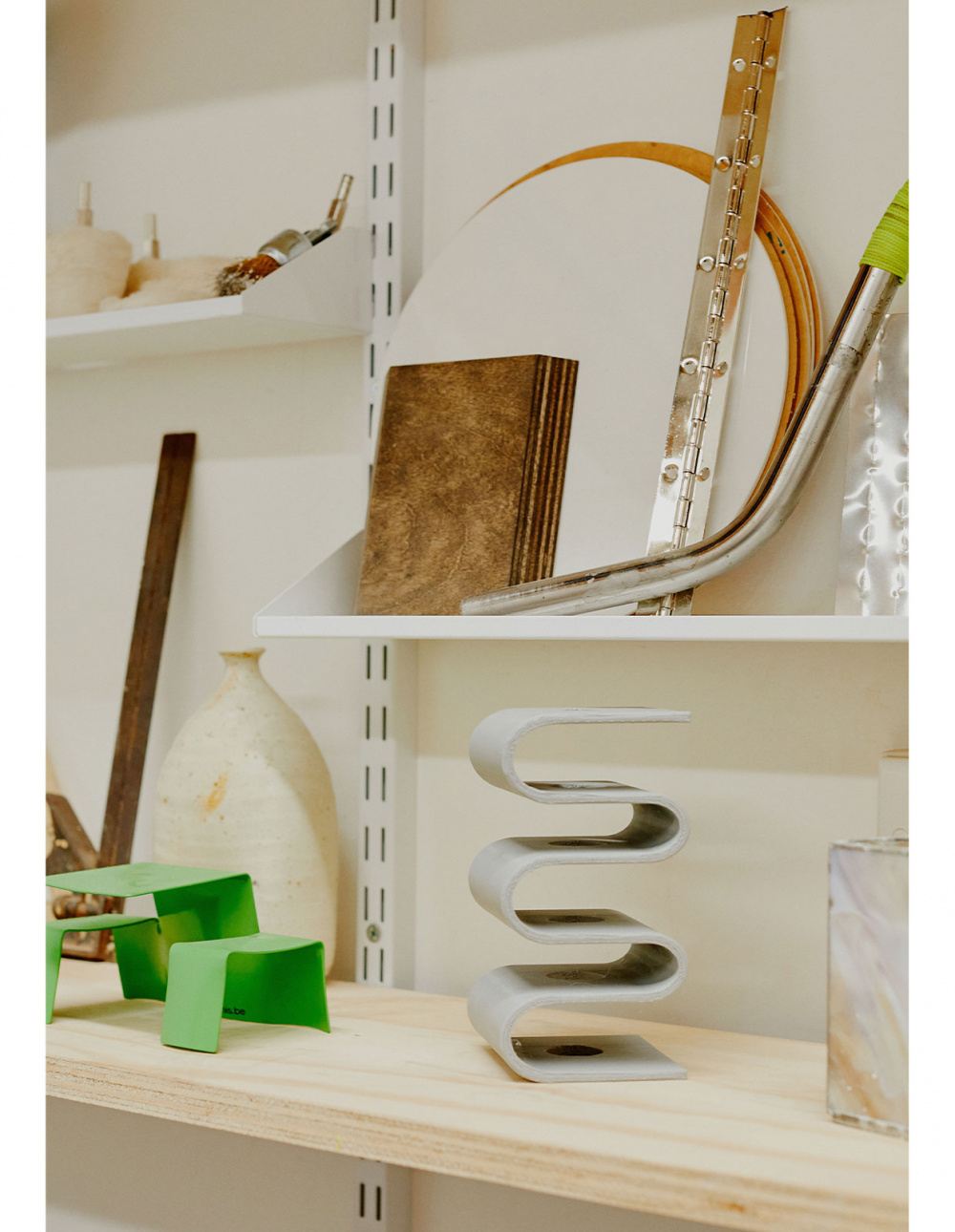
Wiggly prototypes scattered around on display. Photo – Amelia Stanwix for The Design Files.
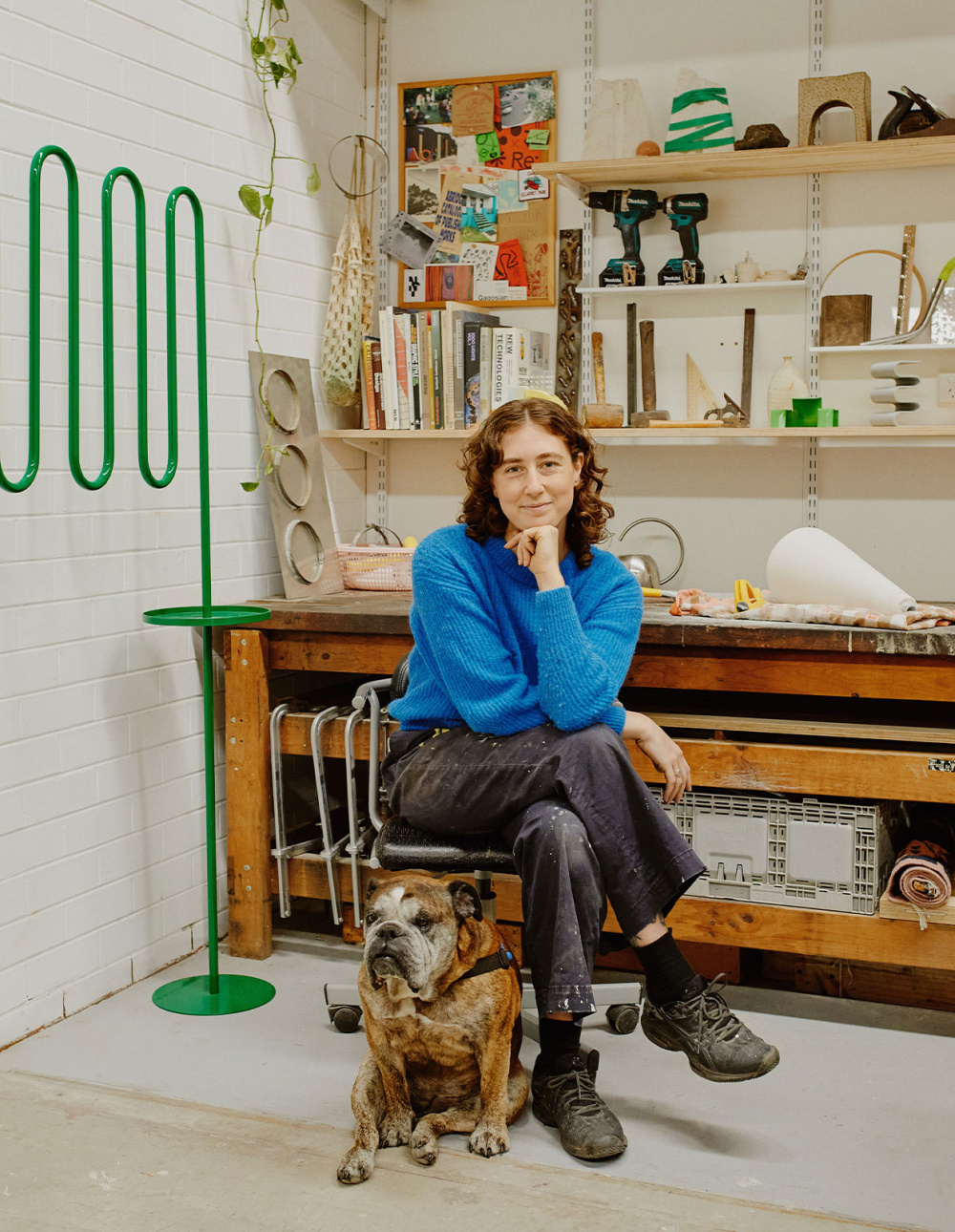
Brigitte in her space! Photo – Amelia Stanwix for The Design Files.
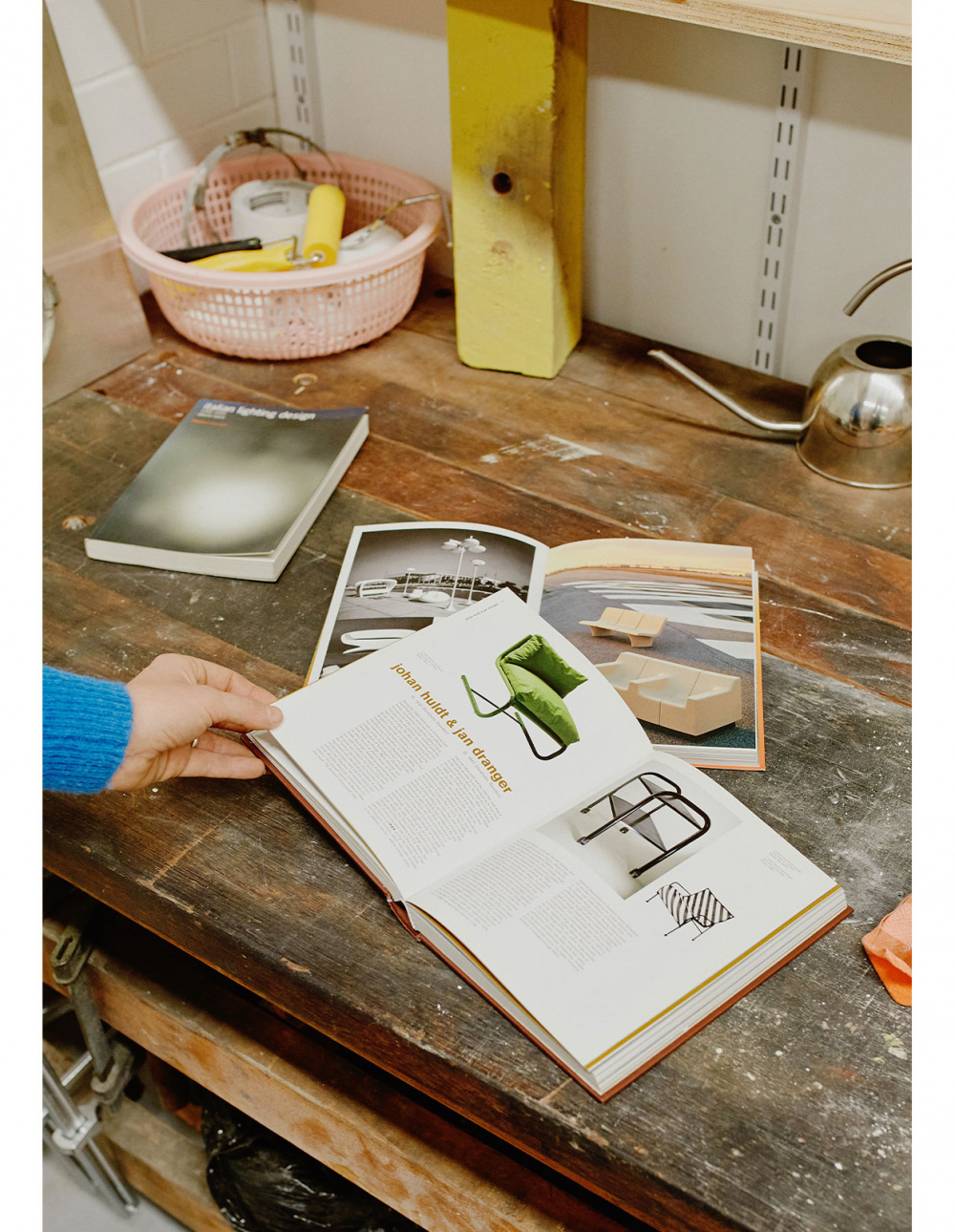
The brains behind Real Non-Real is inspired by 20th century Italian furniture design and the interiors of Eileen Gray. Photo – Amelia Stanwix for The Design Files.
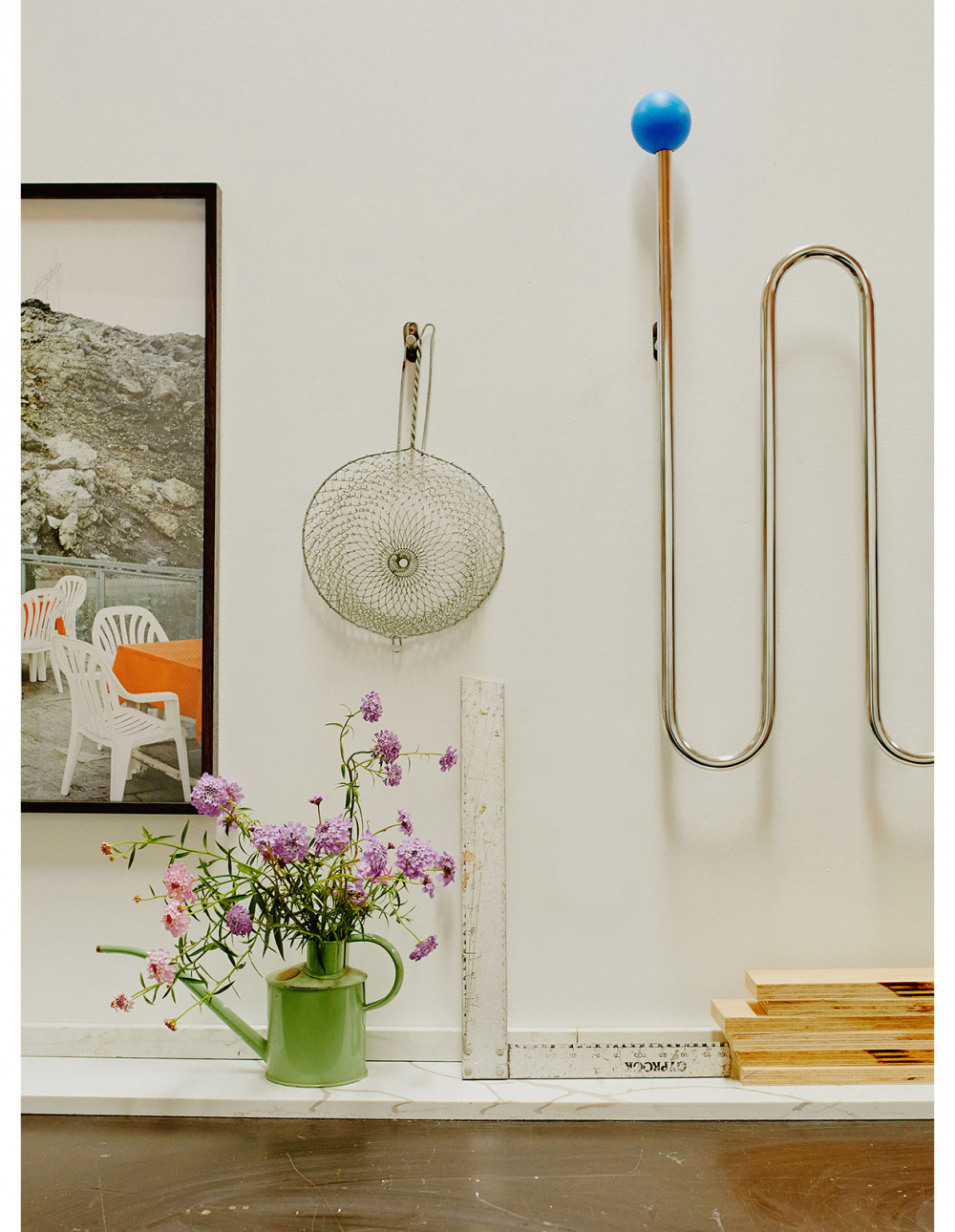
The Formosa wall rack in use! Photo – Amelia Stanwix for The Design Files.
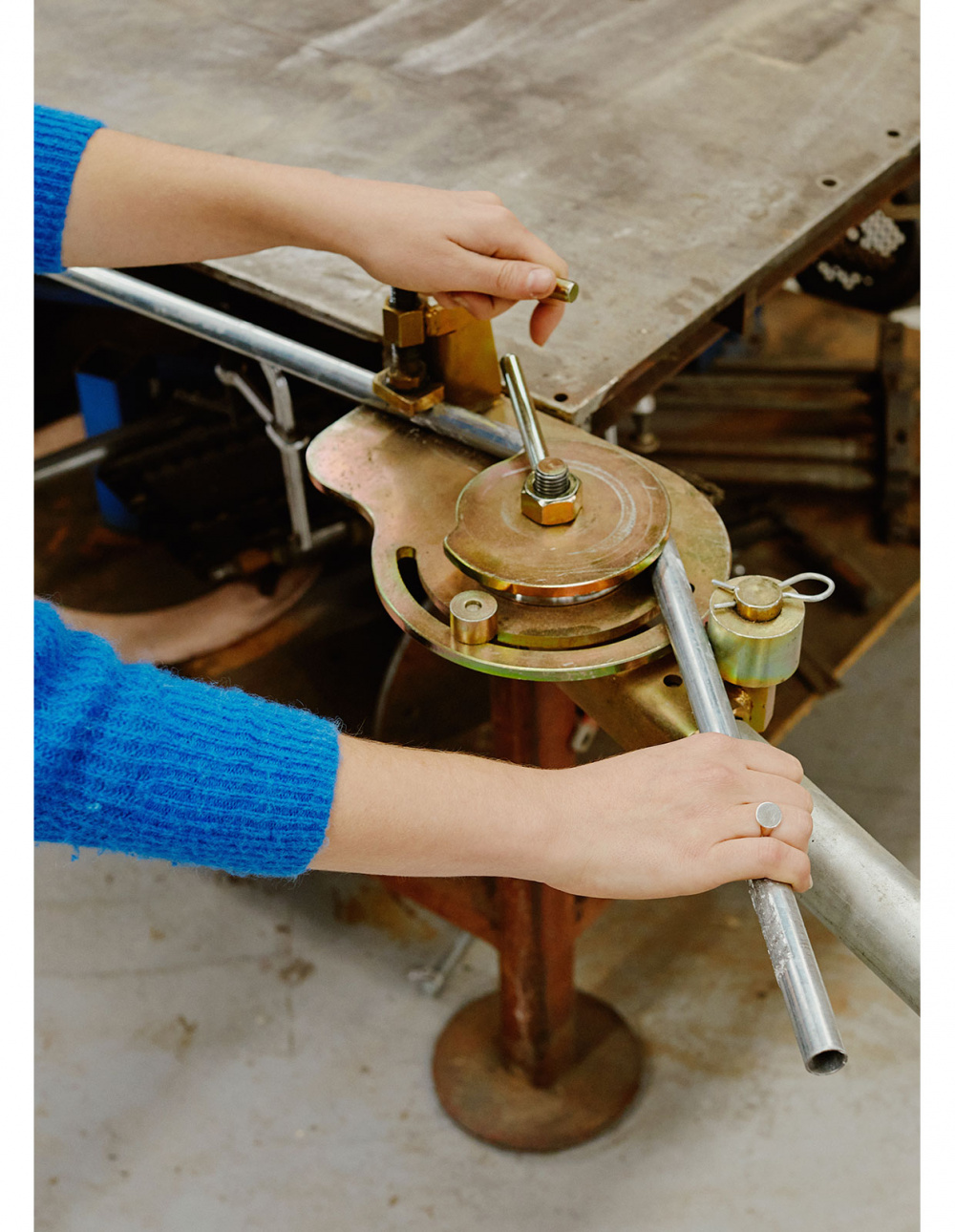
Bending her own materials by hand. Photo – Amelia Stanwix for The Design Files.
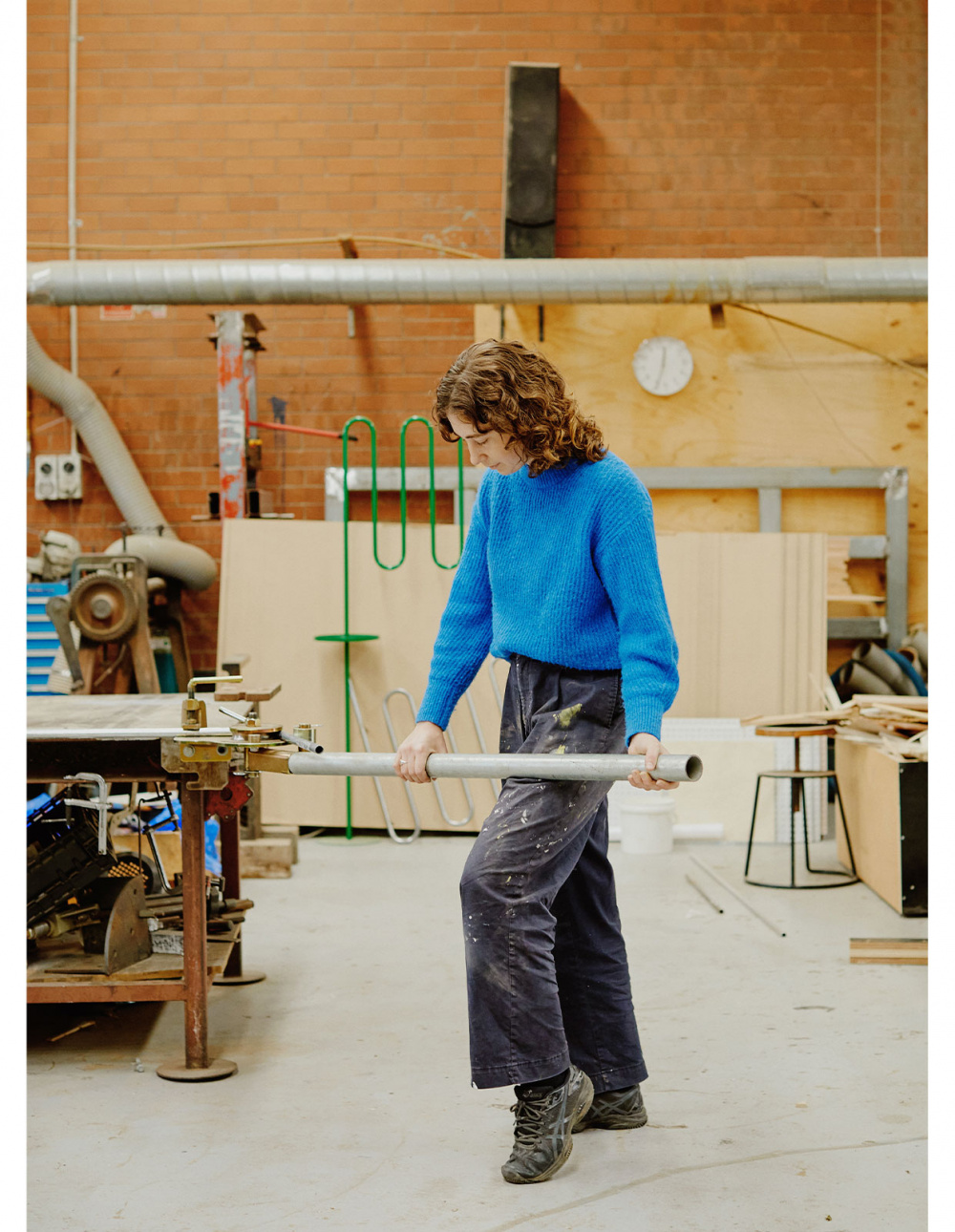
Trying out new materials. Photo – Amelia Stanwix for The Design Files.
When we first ran a story on Brigitte Owers-Buccianti eye-catching Formosa stand in 2020, the headline was: ‘This Wiggly Coatstand Can Be Anything You Want It To Be’. Eighteen months later, that is still the underlying purpose of all Brigitte’s designs, created under her business name, Real Non-Real.
Focused on multi-functionality and making versatile design pieces that look great, Brigitte’s designs combine numerous pieces of furniture in one. Her signature Formosa, made from seven metres of bent powder-coated steel and a conical cement base, for example, could be a hat-stand, coat-rack, towel rail, bedside table or all of the above. For an exclusive collection for Modern Times, Brigitte fused the Formosa stand with the Méta bench to add a seating component to the already multi-purpose piece.
Brigitte shares a workshop in Coburg North with a guitar luthier, a knife maker and two woodworkers. This is where the interior-design-student-turned-furniture-designer conjures the designs for her bent steel pieces inspired by a combination of 20th century Italian furniture and Eileen Gray’s interiors.
Hello Brigitte! You’ve had a pretty varied design background and training, including interior design, sculpture and ceramics industrial design. What brought you to furniture design?
I began with studying fine art at RMIT (majoring in ceramics and sculpture) but I felt I wanted to scale my design up so I transferred into interior design. I then became frustrated with always designing things in the digital realm and that projects were never actualised, which is how i ended up designing furniture I could actually make (unlike 3d modelling where you can go on and on forever and nothing is truly finished).
How did you learn your craft?
In 2019, I was lucky enough to do exchange in Toronto, Canada, where I took two classes – furniture design and furniture construction. They were predominantly woodworking based, however I’ve always been drawn to metal and so I spent most of my free-time outside of class in the metalworking shop, learning how to bend, weld and finish metal from the amazing student technicians that worked there.
What is the process of actually making one of your pieces?
Each piece is handmade in Brunswick by the amazing Dustin from Us From Space. The floor Formosa uses just under seven meters of steel (!) and is hand-bent using a machine that is actually designed for making custom motorcycle parts.
I then pour and finish the cement bases, however I have decided to no longer make these bases out of cement and am in the process of working on an alternative.
What do you think is your ‘voice’ in the furniture design field?
I’m really just excited about making pieces that improve the functionality of seemingly mundane parts of daily life: like walking in the door and having a space to put your things so you don’t lose them.
I’m also excited about making multi-functional pieces of furniture that are time and space saving. Again, placing emphasis on making daily routines and rituals more enjoyable.
Do you have any key references or inspirations?
A huge inspiration for me is 20th century Italian furniture and object design. The pieces were embedding with the ability to be customised and transformed to suit the user and their changing needs. Also, Eileen Gray’s interiors and approach to adaptable furniture are fundamental in my way of approaching design.
What does design mean to you, and what do you hope to communicate?
Design to me is making daily life more pleasant, whether that’s functionally or aesthetically or, even better, combining the two!
Pre-sales for the Wall Formosa and Floor Formosa open in February here. The Formosa stand with Méta bench base is available exclusively through Modern Times.
Brigitte’s work will be shown as part of Craft Victoria’s new series By/Product from March 8th – 27th.

